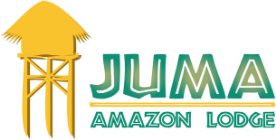In today’s post we would like to share with you some words and terms that we think are very important and relevant for those who want to know more about the Amazon Rainforest or are already planning a trip to the Jungle: It is the Amazonian Glossary.
The Amazon Rainforest Glossary
| WORD | MEANING |
|---|---|
| ANGELIM | Also known as fava-de-bolota, it is a tree whose flowers are dark red. |
| AQUARIQUARA | Typical Amazonian tree, with a very versatile wood. |
| BABAÇU | Palm tree that produces small seeds which serve to the manufacture of cooking oil, much apreciated in the region. Its leaves are used for roofing. |
| CABOCLO RIBEIRINHO | Literally “native who dwells by the river”, is a descendent of local Indians who have a very peculiar way of life, thoroughly integrated to the Amazonian river system for food (fish and farming), transportation and other daily activities. |
| CARLOS GOMES | One of the greatest Brazilian maestros and classic music composer, lived in the 19th century and is the author of O Guarani, an internationally aclaimed masterpiece. |
| CIGS | Short for Centro de Instrução de Guerra na Selva, the Jungle War Instruction Center, as the name implies, an army base especialized in the training of soldiers for jungle warfare. |
| COTIA | A small rodent with brown fur, living on the flooded land. At dusk can be spotted eating fruits that fall from the trees. |
| ENRICO CARUSO | Considered to be one the greatest tenors of all time, had his carreer peak at the beginning of the 20th century. |
| IGAPÓ | Part of the Amazon rainforest that stays underwater during the rainy season, when the water level rises up to 15 meters. |
| IGARAPÉ | A creek inside the jungle. |
| ITAÚBA | A tree with thick leaves and a hard yellowish wood which produces a tasty blackberry type fruit. |
| JACAREÚBA | A tree with very hard wood and beautiful orange flowers. |
| LA TRAVIATTA | One of the most popular operas in the world, La Traviatta is considered to be Giuseppe Verdi’s masterpiece. |
| PIRANHA | A carnivorous fish famous for its ferocity. In the Amazon region are of small size. |
| PIRARUCU | Brazil’s biggest fish, can feed a family of 10 for a month and reach 200 kilos! |
| RUBBER BARONS | In the late 19th century, the price of the rubber has gone to heaven, turning a few traders into millionaires in Manaus. The sudden fortune resulted in the construction of many wonderful landmarks, such as the Opera House, the Customs Building, the Floating Harbour and the City Market. It is said that many of the rubber barons, as they were known, sent their clothes to be washed in Europe, just to show society its new status, which by the way lasted less than a decade. |
| TAMBAQUI | Harder to catch but more tasteful than the tucunaré, the tambaqui is usually fished in the middle of the region’s rivers. |
| TUCUNARÉ | A spotted fish very common in the Northern region of Brazil where it can be found in shallow waters in great quantity during the dry season. Its meat is much appreciated. |
We hope you liked this post. If you want to see more, check this one out: Venture into the Amazon Rainforest at Juma Amazon Lodge
Follow us on our Social Media: Facebook, Twitter and Instagram.
Get in touch: reservas.lodge@jumahoteis.com.br or give us a call +55 92 3232 2707. You can also reach us through ou WhatsApp : +55 92 99142 2708.

 Voltar
Voltar
